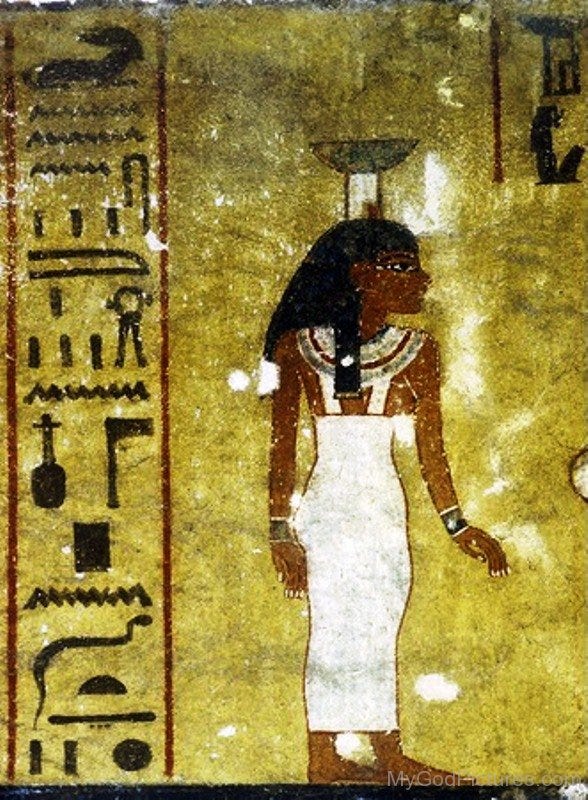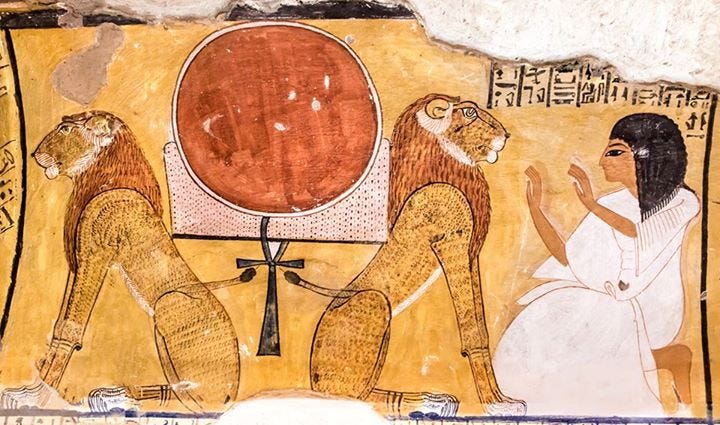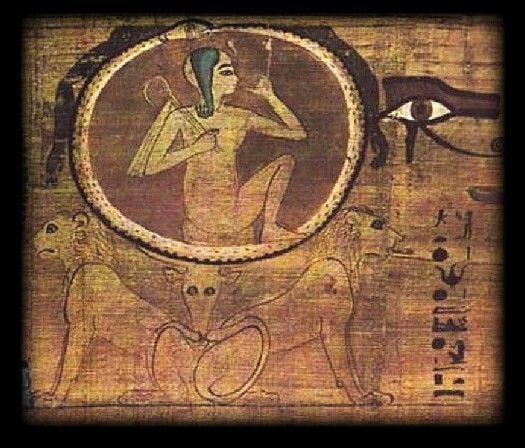THE OLD GODDESS WALKS WITH US IN GRIEF, AND KNOWS THE PATHWAYS….
We live in a modern culture that has given us no maps for grief, death, loss and also the way back through the portal into light and renewal. So we muddle through, packaging our grief up like clutter, stuffed under the beds of our hearts and lives.
We also bury our light, our desire, our wealth, our joy, as grief is also their mother.
This loss of languages of grief may not concern us for a while. If we are lucky, when we are young this eternal growth upwards towards the light is fine, but if we are not lucky, or as we age, as we all must do, this absence casts a long, withering shadow.
The shadow is a pool of magic, an abyss, a portal, a darkening of feminine wisdom.
When my parents died I called upon the ancestors and ancient lineages of Mary Magdalene and the Feminine Magicians to help me be a midwife, not a bystander.
Over a 10-year-long initiation, both my parents died and were returned to the earth in green burials in the foothills of the sacred mountain Mam Tor in the Peak District of England, where ancestral traditions of goddess worship, feminine magic and queenship were practiced for thousands of years. I buried them, played harp over them, spoke in old languages, and acted as keening woman, bard and daughter.
During this momentous time, an ancient lineage of Ancestors appeared to me, rising from the dragon mounds of Mam Tor and the sacred landscape of Hope Valley - once more famous than Avebury or Stonehenge - when The Old North was at the heart of magic. They wanted to transmit something to me, and through me, into the world.
In 2017, a year before my mum’s death, I held a Rebirth ceremony with her in my old childhood bedroom. The sun was setting over the moors, and time was softening. At the end we lay weeping together, my head on her chest like a new-born babe, and I said to her, “You weren’t alone mum, I was there with you. We did it together”.
I will never forget her tear-streamed remote face silhouetted. A few days afterwards we all went together to the funeral parlor to ‘book her funeral’ – it was surreal, as we all sat there together in a small white furnished room, looking through books together and mum deciding what coffin she wanted. We had no idea she would die so soon.
Grief gently takes our hands and reminds us that this realm is not one of ‘perfection’ and was never intended to be. It is a realm of love, grief, and becoming, re-shaping.
Grief relieves us of our need for things to be perfect; instead we meet things as they truly are. Grief makes us slow, heavy, and deep enough to enter the Earth Mystery.
Grief is a dimension of wisdom, and the heart of the Sophianic Mysteries. It is the space of being that the Dakinis and Bean Chaointe (pronounced ban-queen-sha, Irish Keening women) inhabited, where innocence is distilled into wisdom and experience and a soul portal is opened. Some of the most famous Keening Women of Death, Grief and Rebirth and Ecstasy are the Priestesses of Isis in Egypt, practitioners of an ancient, ancient magic that first emerged from the feminine womb rites of Africa.
In Egypt magic, it was believed that the soul would be trapped in the body which had been its home, after death. It was not a given that the soul would just sail free, it had to be coaxed out. It was the weeping, singing, sounding, and lamentations of the female Grief Priestesses and mourners that would awake the soul from its entangled slumber in the body, so it could journey on. They were attempting to revive a stuck soul by their tears, and their ability to feel the sorrow of departure into otherworld.
It was a very somatic art, the women actually dripped the elixirs of their tears over the dead body, and unloosened their long hair (usually only done in the bedroom, but repurposed for the death room) and physical dragged their hair across the body, whilst wailing, singing, lamenting, beseeching, praising, rebuking, transmuting.
This is uncannily similar to the role of the Keening Women in Ireland, working on behalf of the mysterious Fairy Woman, The Banshee. In Ireland, the women would loosen their long hair and stand wailing on the coffin during the wake procession.
The ancient funeral and lamentation rites of Isis took place around October, similar to the Samhain and Swan/Keening rites of Britain. The rites are to mourn the death of Osiris, the god, green man and wizard of the Egyptian traditions. These traditions and lamentation rites were used at the deaths of Pharoahs or nobility, but were created as ritual tools that also had mystical roots in ceremonial death and rebirth practices.
This ancient Egyptian liturgy of funerary and lamentation rites for the ancient annual mysteries are encoded in ancient texts.The oldest written copies date to Egyptian Book of the Dead (Coming Forth by Day) ca. at least 1500 BCE, probably older.
The Osiris cult eventually became the Isis cult, and the Osiria rites happened “the 25th day of the 4th month of the Inundation, which is September/October” (the Nile flooded June, July, August, September. Later, these became the Isia (Isis) rites and were recorded as happening Oct 28- Nov 1, by 400 AD in Roman time. Crucial to these magical rites are two powerful goddesses, women of magic, who can resurrect.
When it came to death, this was women’s work. Maybe this is why women are instinctively feared by the worlds of light and logic? Because their long hair trails in pools of death, and their tongues know the languages of ancestral loss and grief.
In Egypt, the Goddess Isis had a dark twin, Nephthys, and together they represented the womb of earth and the cosmic womb of sun and starlight, an encased continuum.
The realm of Nephthys was the underworld the darkness inside the earth, which is heavy, embodied, rich with soil, bone, tears, nourishment, the soul enclosure. Whereas Isis is the mistress of the dazzling darkness who can guide us into light.
“The Lamentations of Isis and Nephthys is an ancient Egyptian text in which the two goddess-sisters call the soul of the god Osiris to rejoin the living. The poem takes the form of a call-and-response liturgy and the dual entreaties of the two sisters echoed each other in their attempts to symbolically revive the god.
LAMENTATIONS OF ISIS AND NEPHTHYS
Come to your house, come to your house!
O you of Heliopolis, come to your house, for your foes are not.
O fair Sistrum-player, come to your house that you may see me, for I am your sister whom you love, and you shall not be parted from me.
O fair youth, come to your house; for a very long while I have not seen you.
My heart grieves for you, my eyes search for you, and I am seeking you in order to behold you . . . to see you, to see you…
Come to her whom you love, come to her whom you love;
Come to your sister, come to your wife, come to your wife!
O you who are weary of heart, come to the mistress of your house, for I am your sister by your own mother, and you shall not be far from me.
The faces of gods and men are turned towards you, lamenting you in unison; while I can see I call upon you with tears, even to the height of heaven, but you do not hear my voice, although I am your sister whom you loved upon earth and you loved none other than me, O my brother, my brother!
In the Lamentations, the two goddesses entreat the soul of the departed to return, to live again among them, and invoke Horus, Osiris' son, as his protector in life who will provide him with "bread, beer, oxen, and fowl" and whose sons will guard his body and protect his soul. In the end, Osiris returns to life as the poem ends with the line, "Lo! He Comes!" Although recited to Osiris, it became a regular part of funeral services where it was intended to 'wake the dead' to the afterlife.
When a person died, it was thought their soul was trapped in the body, the house they had grown used to, and the Lamentations would wake that entangled soul and assist it in moving forward. It was known that a spiritual transference was necessary, and this was once the realms of feminine magicians and priestesses, as remembered in the stories of Mary Magdalene and Mother Mary, until the male priests took over.
Nephthys – the lesser known “dark twin” of Isis
Isis and Nephthys worked together in the funerary and lamentation rites (for Osiris). Nephthys is the womb of the earth, governess of the "birth into death, into the darkness" and the sacred twin of Isis, who governs the rebirth into the light.
The name Nephthys means "Lady of the Enclosure or Domain" (womb words), on an archetypal level, the dark womb – and this enclosure also specifically refers to the inner sanctums of the temples / pyramids which associates her with the role of priestess," and the womb-tomb rebirthing portal into the duat or darkness ... the inner chambers of the temple were where dead pharoahs were taken for birth into the afterlife, along with mystery school initiates (like Jesus) who travelled the bardo.
Feminine magic always encodes this twin paring – earth womb and cosmic womb, embodied in different priestesses, women and goddesses or archetypes. They work together, in collaboration. Magdalene is a Nephthys figure. Mother Mary is an Isis figure. In the Jesus tradition you have Mary Magdalene associated with his tomb (womb of his death-rebirth), and Mother Mary associated with his birth and heavenly energies. When they are depicted together at the foot of the cross, you can feel the DNA of a far older tradition, as the faces of Isis and Nephthys take new form.
"Along with her sister Isis, Nephthys represented the temple pylon or trapezoidal tower gateway entrance to the temple which also displayed the flagstaff. This entrance way symbolised the horizon or akhet." The image of the “twin hills” (woman’s legs) birthing the sun is a birthing / death portal which is often shown with the sun being reborn in it. Each day the sun takes its own death/rebirth journey.
What is interesting about Nephthys, as guardian of the underworld and earth-womb mysteries, is that her ritual, talismanic magical tool is the anointing vessel or grail (as you can see in the image grid below at the top left, which is a depiction of Nephthys).
This gives us a deeper understanding of where Mary Magdalene, as the Anointrix, fits into this duality-pairing of feminine wisdom and magic. She anoints Jesus prior to his death, and then is with him at the tomb after his death, to perform the rites that will help him ascend back into the light of (the Virgin Isis). She is a Nephthys figure.
Nephthys is also associated with the two pillars of The Tower, also depicted in the Tarot as both the High Priestess and the Tower card of her dramatic transformations.
"Ascend and descend; descend with Nephthys, sink into darkness with the Night-bark. Ascend and descend; ascend with Isis, rise with the Day-bark." Pyramid Text Utterance 222 line 210.




Here are some more interesting aspects of this dark goddess of grief and death-rebirth….
Nephthys first appears ca 2500 BCE in Pyramid Texts (Old Kingdom, 5th dynasty), sister of Isis, consort of Set”
“Thus, Nephthys was also seen in the Pyramid Texts as a supportive cosmic force occupying the night-bark on the journey of Ra, the majestic sun god, particularly when he entered Duat at the transitional time of dusk, or twilight. Isis was Ra's companion at the coming of dawn."
“Nephthys is a goddess who gives the Pharaoh power to see "that which is hidden by moonlight." This fits well with more general textual themes that consider Nephthys to be a goddess whose unique domain was darkness, or the perilous edges of the desert. Nephthys could also appear as one of the goddesses who assists at childbirth”
"Nephthys is a protective goddess who symbolizes the death experience, just as Isis represented the (re-)birth experience."
"Nephthys was known in some ancient Egyptian temple theologies and cosmologies as the "Useful Goddess" or the "Excellent Goddess". These late Ancient Egyptian temple texts describe a goddess who represented divine assistance and protective guardianship. Nephthys is regarded as the mother of the funerary-deity Anubis (Inpu) in some myths. Alternatively Anubis appears as the son of Bastet or Isis. As the primary "nursing mother" of the incarnate Pharaonic-god, Horus, Nephthys also was considered to be the nurse of the reigning Pharaoh himself. Though other Goddesses could assume this role, Nephthys was most usually portrayed in this function. In contrast Nephthys is sometimes featured as a rather ferocious and dangerous divinity, capable of incinerating the enemies of the Pharaoh with her fiery breath."
In the final installation of this series, we will move onto the death/duat rituals of the Goddess Ma’at, one of the oldest of Egyptian deities, who conjures up even older rites of the magical women who lived before the temples and pyramids were even born.
One thing to hold close is this knowing: We must first enter into the Womb of the Goddess of Grief, who lives inside the womb of earth, downwards, before we can reach the light. Ereshkigal, Nephthys, Banshee, and Mary Magdalene hold this port.
If we do not follow this old feminine map, we fragment, we dissociate, we separate, we start to think that darkness is hell and we must only be light and heavenly. We cut off our power, our treasure, our body, the earth and our deep feminine soul-spirit.
The last installment on Ma’at and the Lost “Grief Eater” Goddess is next.
Join the Grief Salon or Feminine Magic School (Grief Salon included)
Owl Woman Art by Clarissa @clurssa
www.etsy.com/shop/LittleNowhere







I'm so happy to find your writing here Seren. and always happy to find a fellow devotee of Isis. there is much depth here so I will come back and read this whole piece again later...when I first started being guided into underworld journeys with Isis several years ago I very much experienced her as both the shadow AND the light at once. very clearly communicating insights of both as wholeness. I didn't make the distinction with Nephthys/Isis...Much in the same way as when I am journeying with Inanna I am also journeying with Ereshkigal - as the dark/shadow aspect of Inanna. as if they are 2 halves of one whole. But it's true I very often do now experience Isis as light, and she very often does 'guide me out of the darkness'... strangely I was journeying with her yesterday and she did exactly this! thanks for the reflections and insights... love Jodi xxx